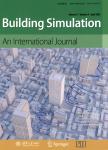A cost-effectiveness assessment of the operational parameters of central HVAC systems during pandemics
作者机构:Department of Building Environment and EnergyCollege of Civil EngineeringHunan UniversityChangshaHunanChina National Center for International Research Collaboration in Building Safety and EnvironmentHunan UniversityChangshaHunanChina China Southwest Architectural Design and Research InstituteChengduSichuanChina
出 版 物:《Building Simulation》 (建筑模拟(英文))
年 卷 期:2023年第16卷第5期
页 面:667-682页
核心收录:
学科分类:08[工学] 081404[工学-供热、供燃气、通风及空调工程] 0814[工学-土木工程]
基 金:supported by the National Natural Science Foundation of China(No.51908203) by the Fundamental Research Funds for the Central Universities(No.531118010378)
主 题:outdoor air ratio filtration level airborne transmission risk energy consumption cost-effectiveness
摘 要:The present study develops a cost-effectiveness assessment model to analyze the performance of major operational parameters of central HVAC systems in terms of airborne transmission risk,energy consumption,and medical and social cost.A typical multi-zone building model with a central HVAC system is built numerically,and the effect of outdoor air(OA)ratio(from 30%to 100%)and filtration level(MERV 13,MERV 16,and HEPA)are assessed under the conditions of five climate zones in *** with the baseline case with 30%OA and MERV 13 filtration,the airborne transmission risk in zones without infector is negligibly reduced with the increase in OA ratio and the upgrade of filtration level,owing to their slight modification on the equivalent ventilation rate of virus-free ***,depending on climate zone,a 10%increase in OA ratio results in 12.5%-78.6%and 0.1%-8.6%increase in heating and cooling energy consumption,respectively,while an upgrade of filtration level to MERV 16 and HEPA results in an increase of 0.08%-0.2%and 1.4%-2.6%,***,when compared to the use of 100%OA ratio and HEPA filtration,the application of 30%or 40%OA ratio and MERV 13 filtration would save annually an energy and facility related cost of$29.4 billion in China,though giving an increase of approximately$0.1 billion on medical and social cost from the increased number of confirmed *** study provides basic method and information for the formulation of cost-effective operational strategies of HVAC systems coping with the airborne transmission,especially in resource-limited regions.



